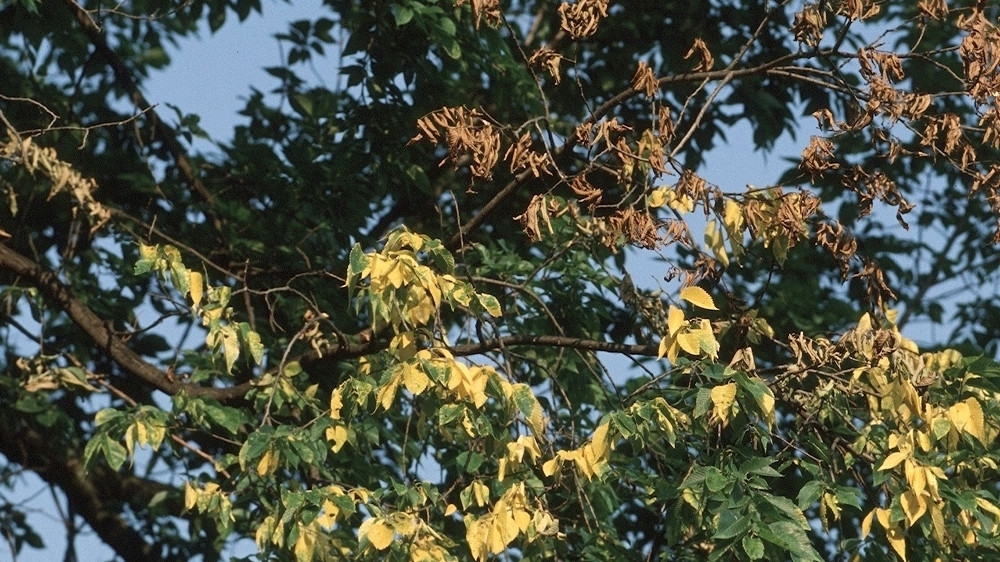Non-urgent government operations are closed December 24 to January 1, reopening January 2. View available services during this period.

Introduction
Dutch elm disease (DED) is a costly, deadly disease that affects all species of elm trees in Alberta. It is caused by a fungus that clogs the elm tree's water conducting system, causing the tree to die. The fungus is primarily spread from one elm tree to another by 3 beetle species. The beetles are attracted to weak and dying trees, which serve as breeding sites. Once the beetles have pupated and turned into adults, they fly to healthy elms to feed, transporting the fungus on their bodies from one tree to the next. Find out about DED symptoms, life cycle, spread and control.
Under the Alberta Agricultural Pests Act (APA) Pest and Nuisance Control Regulation, both DED pathogens (Ophiostoma ulmi and Ophiostoma nova ulmi) – and the European and native elm bark beetles that carry them – are named declared pests.
Impact in Alberta
Alberta has the largest DED-free stand of American elm in the world. In addition to bringing beauty to communities and adding to our quality of life by providing vital environmental protection, our elm trees are an important agricultural industry. The economic impact of keeping them disease-free is significant. The nursery industry estimates 50 to 60 million dollars in annual elm sales.
With no suitable replacements for shade trees on a massive scale, introduction of DED in Alberta could cause massive crop loss in the short term and eliminate the market completely. The Canadian Food Inspection Agency (CFIA) administers the Plant Protection Act which regulates the movement of DED from an infected province to a DED free province. Once a province is infected with DED, CFIA prohibits industry from selling or moving elms out of the province. The impact of this would be severe for local tree nurseries who combined have tens of millions of dollars in inventory.
A province-wide 2017 American elm inventory identified at least 600,000 elms growing in Alberta municipalities, rural properties, shelterbelts and provincial parks, valued at over $2 Billion dollars.
Removing and replacing DED-infected trees elevates the costs associated with losing valuable trees; it can cost over $500 dollars to remove a tree (an estimated $300 million for tree removal alone in Alberta), with the additional cost of replacing the tree.
Take action
Alberta’s response plan
Together, government and Albertans play an important role in preventing DED from destroying our elm trees.
- Provincial government – the Alberta government supports this critical effort by administering the Act and Regulation and enforcing provincial DED prevention and control.
- Local governments – under the APA, all municipalities, counties and MDs in Alberta have the responsibility and authority to prevent and control DED by implementing the Alberta Dutch Elm Disease (DED) Response Plan. See also Responsibilities and authority.
- Society to Prevent Dutch Elm Disease – STOPDED helps foster and promote the survival of American elms in Alberta by raising public awareness and administering the DED Provincial Prevention Program.
How you can help
Albertans can help prevent and control DED:
- Learn to identify an elm tree and recognize the signs and symptoms of DED.
- Follow best practices to keep your elm trees healthy and less susceptible to DED.
- Know the laws that help prevent DED, and take preventative measures.
- Report all suspect infected trees immediately to the STOPDED Hotline at 1-877-837-ELMS (3567).
- Support STOPDED by becoming a member.